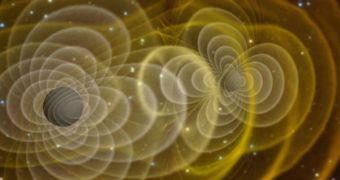German researchers from the Albert Einstein Institute (AEI) say that the likelihood of detecting proposed universal patterns called gravitational waves from Earth could increase significantly if just a single new detector is installed on Earth.
Thus far, these structures were not identified, but detectors are being built to do so. The expected rate of detection could theoretically be boosted by constructing additional detectors in the three countries.
These waves – proposed to exist by Albert Einstein's Theory of General Relativity – are ripple-like distortions in the fabric of spacetime. Some are believed to have been left behind by the Big Bang, whereas others are thought to be produced even now.
Events such as the merger of two supermassive black holes can give birth to such waves. However, detecting them is proving to be an extremely complex task. The new proposal aims at making things simpler for the international scientific community.
Details of the proposed detectors were published in the May 27 issue of Classical and Quantum Gravity, a journal edited by IOP Publishing. The team proves that even a single, additional detector could make a remarkable difference.
At this point, Earth has network of four detectors searching the skies for gravitational waves. They are expected to identify no less than 40 neutron star mergers annually until 2016. These events can produce the gravitational ripples as well, since they too are extremely dense.
By performing optimal coherent data analysis, the detection rate could be boosted by 400 percent. This can be achieved by installing the new detector in either Japan, Australia or India, EurekAlert reports.
If detectors are added at all three locations, then detection rates could increase to an average of 370 events per year. A peak of 500 neutron star / black hole mergers annually could be reached after a few years of continuous operations, the researchers argue.
“The improvements brought about by new detectors are much bigger than the proportionate extra investment required,” professor Schutz explains.
“Even moving an existing LIGO detector to Australia brings two to four times the number of good-quality detections and also dramatically improves the direction information for the events,” he says.
“The new detector in Japan, approved last year, would add extra sensitivity and reliability and greatly improve sky coverage,” the investigator proposes.
“Not only would we be more certain than ever of making detections, we would begin to be able to study neutron stars and gamma ray bursts with information obtainable in no other way,” Schutz concludes.

 14 DAY TRIAL //
14 DAY TRIAL //